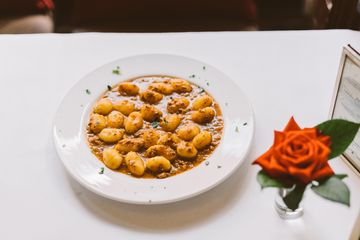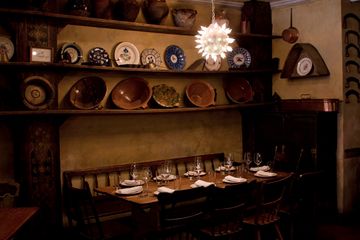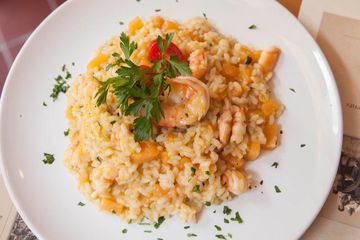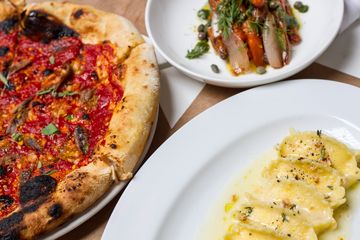
I was eager to try L’Apicio as the people behind this venture are the owners of the two terrific West Village side street restaurants, Dell’Anima and L’Artusi. L’Apicio resides in the more contemporary part of East 1st Street, immediately adjacent to a rather sterile-looking (but we’re sure quite lovely inside) apartment complex. Don’t be dissuaded, however, as neither the food nor the decor at L’Apicio lacks personality.
Entering a well-designed lounge and cocktail area, the tables are arranged so that six people can comfortably hold one conversation. On the Monday night that we were here, the place was almost full, and the kitchen - which is visible when wandering to the back of the restaurant - was buzzing.
L’Apicio specializes in different varieties of Polenta, which they serve with such delights as warm mushrooms, pork meatballs, shrimp, or braised short ribs. The polenta gives each accompaniment a light creaminess, which was a hit among our party. From there, we had a difficult time deciding how to mix and match a wide array of salads (try the warm mushroom and hazelnut), appetizers (especially the bruschetta topped with pancetta and a fried egg), pastas, seafood and meats. We found the appetizer portions to be larger than expected and the mains to be smaller, so it seemed to have all balanced out well in the end. The wait staff was friendly and knowledgeable about the extensive beer and wine list.
Overall, we chose just the right restaurant for our mixed age group and the perfect evening, and we all happened to have been in the mood for a hearty, convivial, and just the right amount of a hip experience. Helpful note: there is no corkage fee at L’Apicio on Sundays and Mondays.








